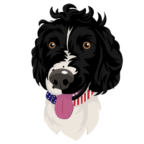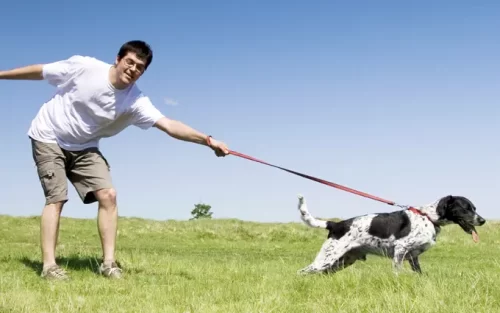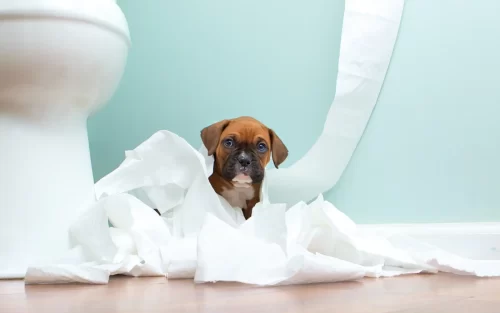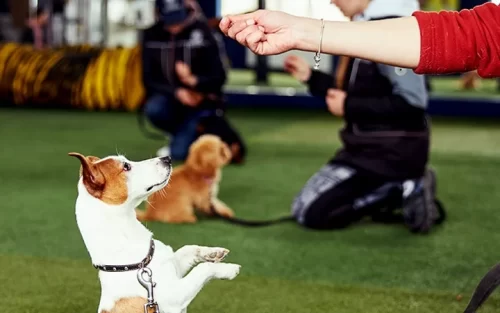There is something extraordinarily powerful about the bond between dogs and their human owners. But this bond can sometimes lead to separation anxiety when the owner is away. One way to alleviate some of this stress, and keep your furry friend looking good at the same time, is through a regular grooming routine. We’re not just talking a quick shampoo and towel dry; we’re talking about a full regime that not only keeps your pup looking sharp but also helps ease their nervous minds. “Dog Grooming Techniques for dogs with Separation Anxiety” is a topic that many dog owners will find practical and helpful.
Recognising Separation Anxiety in Dogs
Before we dive into grooming techniques, it’s essential to understand what separation anxiety looks like in dogs. Some of the most common symptoms include excessive barking, destructive behaviour, and even attempts to escape when the owner is away. Once you’re aware of these symptoms, you can better tailor your grooming routine to alleviate some of this distress.
Understanding The Power of Touch
Physical contact has a calming effect on most animals, including dogs. Dogs, in particular, respond positively to being brushed, which simulates the sensation of being groomed by their mother’s tongue. This soothing feeling often leads to a reduction in stress levels and can be a valuable tool for managing separation anxiety.
Developing a Grooming Routine for Dogs with Separation Anxiety
One of the best ways to reduce your dog’s separation anxiety is to develop a consistent grooming routine. Consistency is key. Dogs thrive on routine, and a regular schedule of grooming can give them a sense of security and predictability.
Step 1: Brushing
Begin your grooming routine with a good brush. This isn’t just about making sure your dog’s coat looks good. Brushing your dog is an excellent opportunity for you to bond with your furry friend. Plus, it provides that all-important physical contact that can help reduce anxiety and stress.
Step 2: Bath Time
Next up is bath time. Ensure you pick dog-friendly shampoo (we recommend these) and take care to avoid the eyes and ears. You should aim to make bath time fun, like a mini spa day, and a chance to indulge your dog with attention.
The key to managing your dog’s separation anxiety is understanding and patience, and a well-planned, consistently followed grooming routine can play a significant part. Stay tuned as we continue this in-depth look into dog grooming techniques for dogs with separation anxiety in the next instalment of this series.
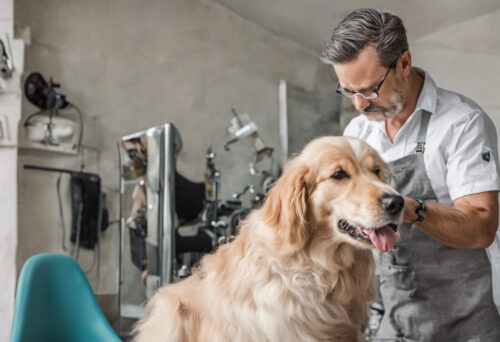
The Role of Massage in Dog Grooming
One often overlooked but increasingly popular technique in the grooming routine is massage. Not only does it help in improving your dog’s circulation and reducing muscle tension, but it also has been shown to significantly decrease anxiety levels. Take 5-10 minutes each day to gently massage your dog, ideally after brushing.
Step 3: Massage
Begin with a gentle rub on your dog’s neck, shoulders, chest and back. Gradually increase the pressure as you sense your dog relaxes further. If your dog seems uncomfortable at any moment, reduce the pressure, or move on to a different area. For best results, ensure your dog is warm and cozy before starting the massage.
Ending your Grooming Session on a Positive Note
The end of a grooming session can impact how your dog perceives the routine. Always aim to finish on a positive note. Whether it’s a rewarding treat for their good behaviour, a short play session with their favourite toy, or simply a few words of praise, make sure to leave your pup feeling happy and satisfied.
Step 4: Rewarding your Dog
A reward can be a small dog-friendly treat, a little playtime or even a short walk after the grooming routine. Remember, the objective here is to associate the grooming routine with positive experiences. This will not only help your dog to better tolerate the grooming sessions but can also alleviate some of the symptoms of separation anxiety.
Advanced Techniques
Grooming, while primarily a caregiving activity, can also be a learning opportunity. You can teach your dog new commands or incorporate grooming equipment into their training regime. However, these are advanced techniques, best introduced to dogs with moderate to low levels of separation anxiety.
Step 5: Training with Grooming Equipment
Grooming equipment such as brushes and nail clippers can be introduced as part of obedience training. For example, teaching your dog to be still while brushing or stand still while getting their nails clipped. You can use positive reinforcement techniques for better results. The goal is to have your dog associate these tools with positive outcomes, thereby reducing anxiety even further.
In conclusion, a carefully planned and consistently implemented grooming routine can be incredibly effective in reducing separation anxiety in dogs. Remember, every dog has its pace, and it’s essential to be patient and understanding throughout this process. Check out our next section for more on dog grooming techniques relating to special conditions.
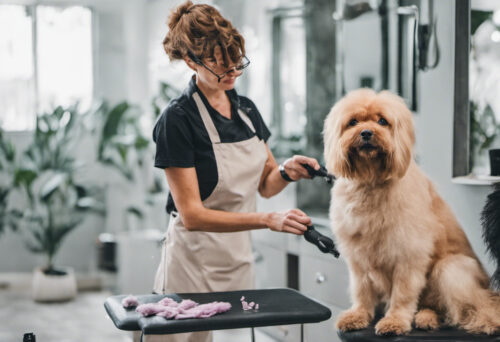
Frequency of the Grooming Routine
It’s essential to maintain a regular grooming routine, but the frequency depends on the dog breed, their coat length, and comfort level with grooming. Long-haired breeds may require daily combing to avoid the formation of knots and matts, while short-haired breeds might need it just once a week. Understanding your dog’s breed and comfort level will enable you to create an optimized grooming routine. For more breed-specific information, the American Kennel Club has an extensive database.
Step 6: Adjusting the Frequency
Ensure the grooming frequency suits your dog’s temperament as well as their physical needs. Monitor your dog’s reactions and gradually increase or decrease the sessions as needed. Remember, it’s a positive and calming experience, not a chore they dread. It can also be another way to decrease separation anxiety.
Patience and Persistence are Essential
Establishing a new routine takes time. Be patient with your dog; changes can often incite anxiety. Persistence is vital when introducing new grooming techniques. It may take several attempts before your dog becomes comfortable. For helping your dog to tolerate grooming, BARK provides some good tips.
Step 7: Patience
Give your dog time to understand what’s expected of them during their grooming sessions and to adjust to the new routine. If they show signs of distress, take a break. Over time, with consistent positive reinforcement, your dog will start associating the grooming routine with tranquility rather than stress.
Conclusion
Tackling separation anxiety using grooming techniques is a two-fold benefit strategy. It helps your dog stay healthy and good-looking while easing their separation anxiety. Keep in mind that it’s not just about the grooming process but also the quality time you spend with your furry friend. This intimate grooming routine will strengthen your bond, making your dog feel much more secure when you’re away.
Remember, every dog is unique and will react differently to grooming routines. Keeping your dog’s comfort paramount, along with trial and error, will eventually lead you to find the perfect grooming routine to alleviate your dog’s separation anxiety.
For more on maintaining your dog’s physical health while addressing their mental well-being, visit Petfinder.
Step 8: Celebrate Progress
Remember to celebrate the small victories along the way. Recognizing progress boosts your morale and reinforces your dog’s positive behavior. Continue to show patience, persistence, and love, and you’ll see positive changes in your dog’s behavior in no time.
For more in-depth analysis and step-by-step guides on “Dog Grooming Techniques for Dogs with Separation Anxiety,” stay tuned. Enjoy the process, and happy grooming!
